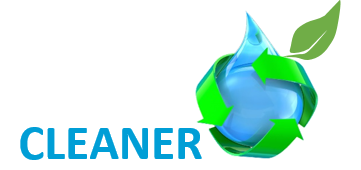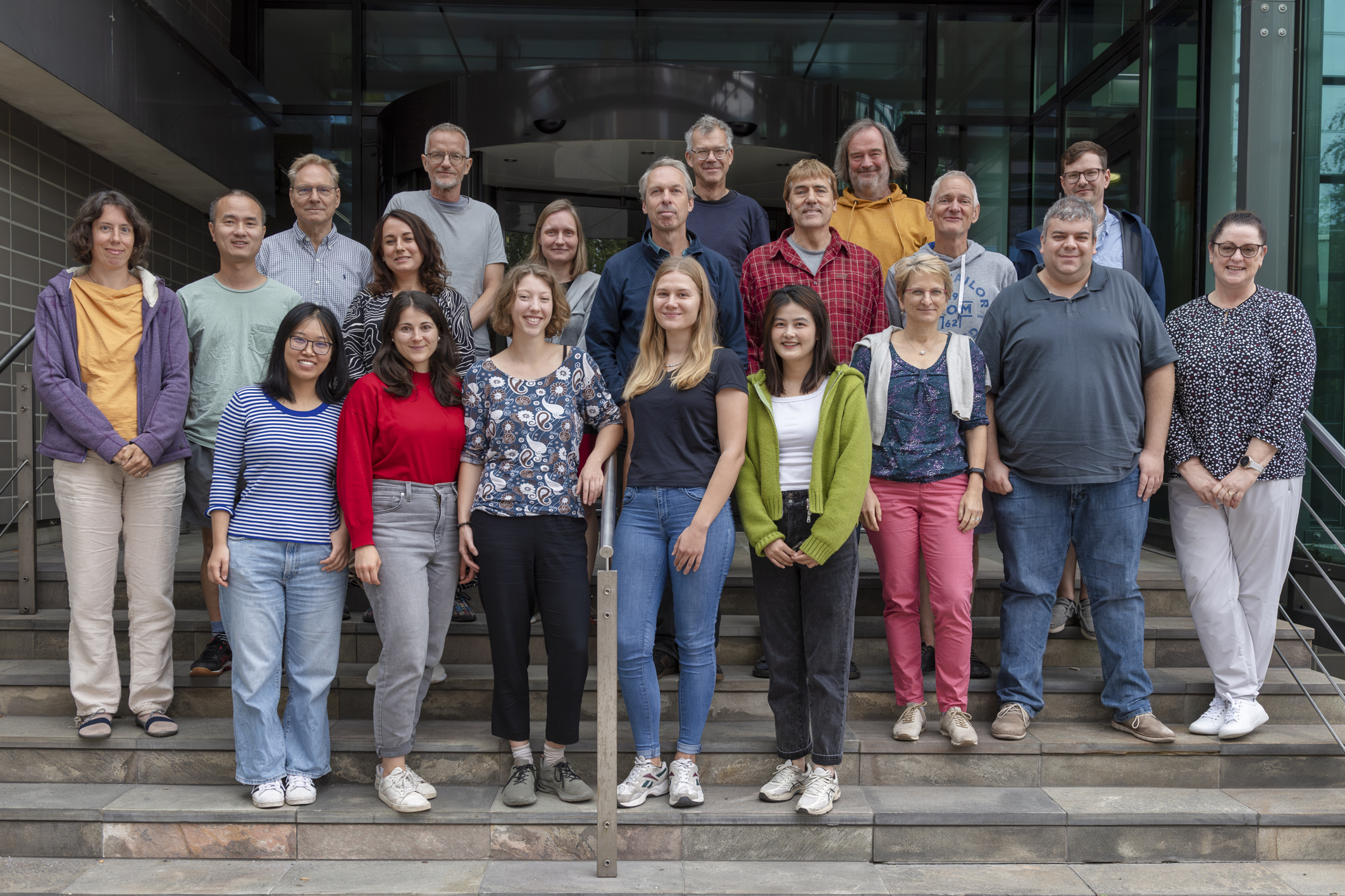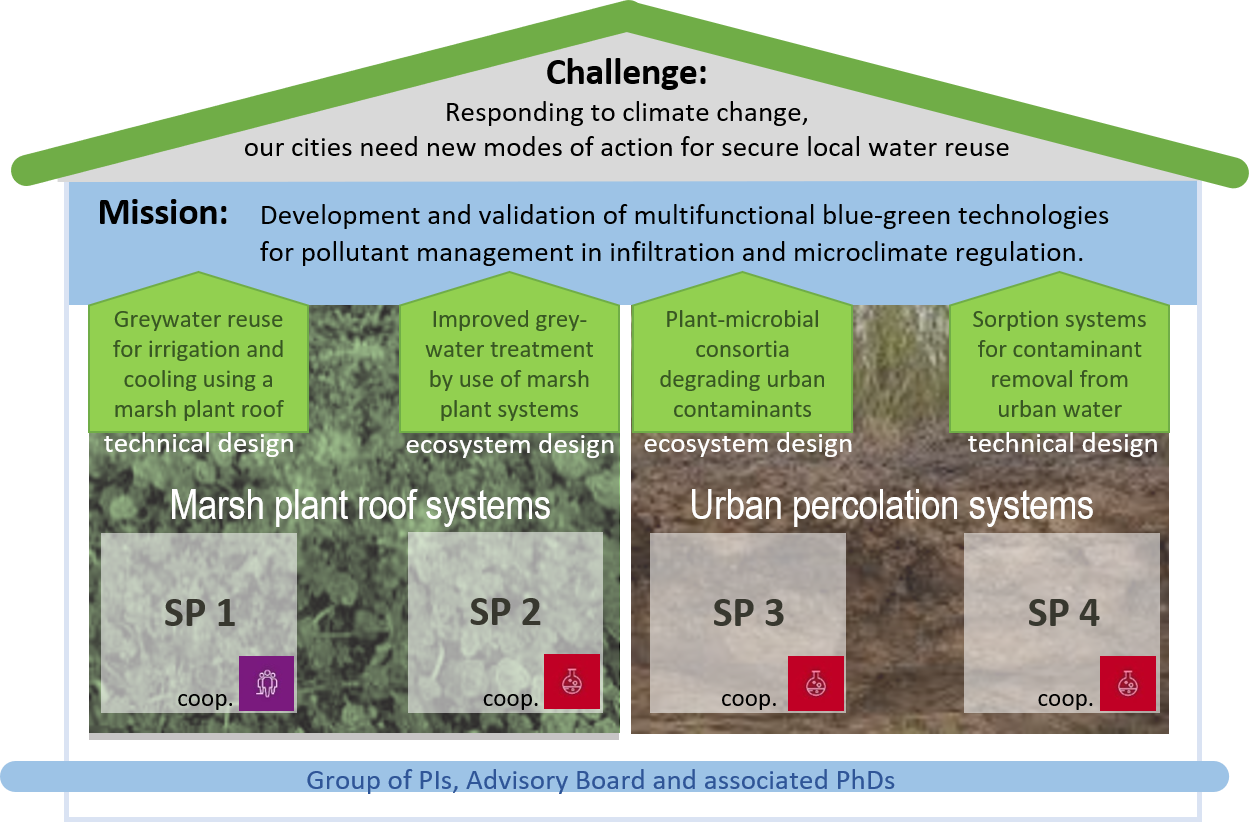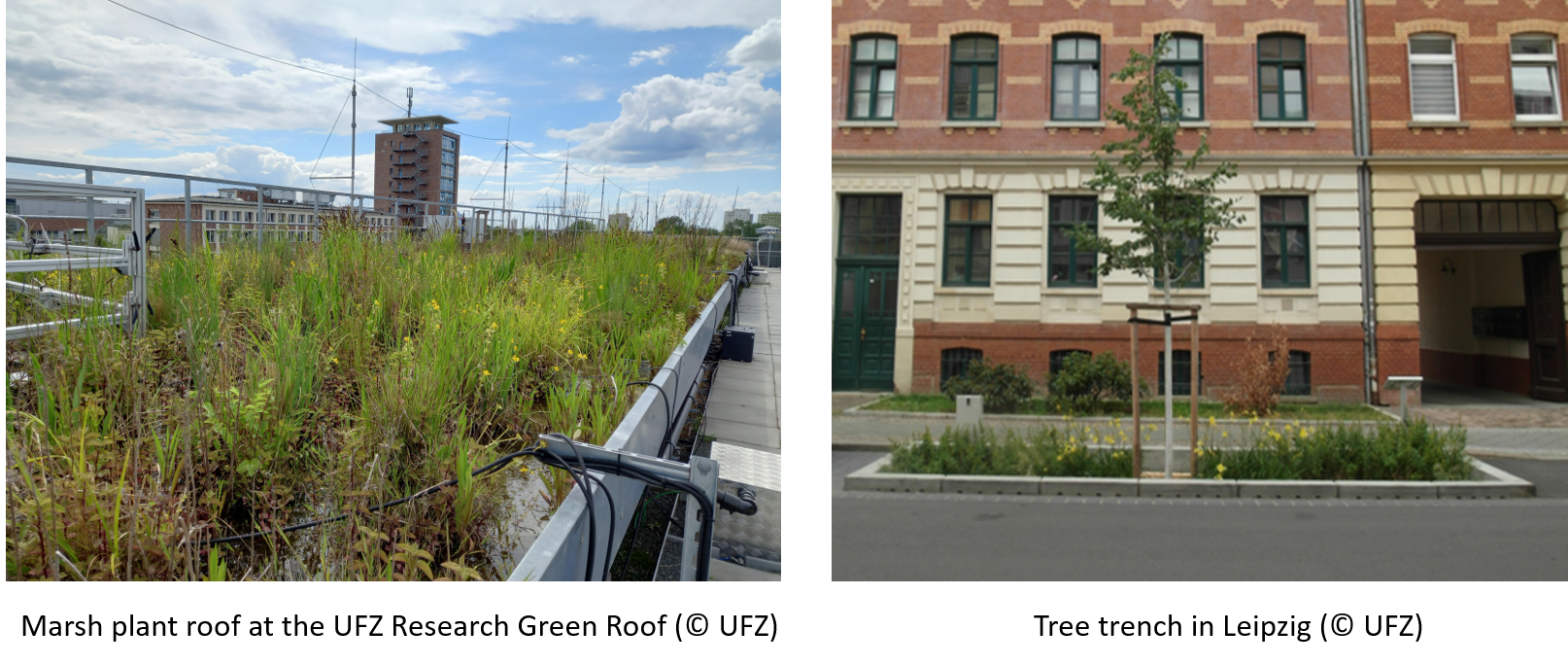
Fostering pollutant-sink functions
of Blue-Green Infrastructures:
towards local urban water cycles
in climate-resilient cities
The PhD college of the Research Unit Sustainable Ecotechnologies

Climate change causes more extreme weather: hotter and drier summer periods and more frequent/intense storm water events. While the heat impacts our well-being in cities, the heavy rainfall events overstrain the drainage systems, especially in urban areas with high degree of sealing. Both require energy-intensive and greenhouse gas emitting adaptation efforts.
To overcome these difficulties the concept of sponge cities has been developed with the aim that rainwater is no longer drained out of the city, but collected for irrigation, infiltration and natural cooling during hot periods. Blue-green infrastructures (BGIs, e.g., green roofs and trench systems for runoff infiltration) play a significant role in achieving this purpose. In addition to the task of collecting rainwater, BGIs have an as yet underutilized potential to clean urban water from contaminants. In the future, to counter the effects of climate change, every source of water will be needed to maintain the required urban greenery. Water runoff from buildings, roads and other urban surfaces, which can be an important source of water for street greenery and is collected in trench systems (urban runoff), contains particulate and freely dissolved pollutants that accumulate within the trenches. The release of these contaminants into the water cycle and into groundwater has to be prevented. Another source of irrigation water for urban greenery as well as microclimate management that has previously been underappreciated is the domestic greywater. Greywater forms about 70% of the domestic wastewater and its quantity is weather-independent. As this water type contains highly diluted pollutants only in low concentrations, it represents a valuable source of water that could be treated and reused directly at the place of its origin, thus feeding local water cycles on a neighbourhood scale. A green roof type equipped with marsh plants as purification elements would be suitable for this purpose.
Knowledge gap
There are gaps in knowledge regarding the specific capacity of microclimate-regulating BGIs to retain urban pollutants; particularly those found in urban runoff and greywater. In this context control options for decentralized urban water treatment have to be developed, which involve the optimization of pollutant bioavailability and microbial activity in adsorbent- and plant-based biotransformation systems in a long-term stable operation.

Research
Towards the development of modular systems allowing for the reuse of polluted water in urban areas CLEANER will consider input pathways from greywater (as carrier of household chemicals) and from rainwater (as carrier of airborne pollutants, surface and road runoff). Typical classes of compounds to be studied include persistent mobile micropollutants, urban traffic / tire wear, combustion residues and façade antifouling agents. For greywater treatment, a multifunctional energy-neutral cooling marsh plant roof system with redox-differentiated microbial communities will be developed, investigated and optimized. Furthermore, plant-microbe interplay influencing urban pollutant transformation in BGI will be investigated to understand the biotransformation processes as a part of control options for urban water treatment. To meet the challenges of either highly variable flux and reduced bioavailability of urban pollutants, reactive percolation ecosystems for efficient retention and biodegradation of urban contaminants will be developed.
By coupling expertises of different UFZ departments (SUBT, MEB, AME, TECH, and SUSOZ) and the existing partnerships with the City of Leipzig and other practice partners we will form a research faction for the investigation of the upgrading of blue-green infrastructures for the development of closed urban water cycles. CLEANER will include four core integrated as well as several associated PhD projects. The PhD students will be included in HIGRADE, Green Roof Research consortium and belong to platform project CityTech.
The core PhD projects will address the following key-questions:
Key questions to be solved:
1. How can the marsh plant roof be designed to ensure highest possible degradation of nutrients, removal of micropollutants and sufficient hygienization?
2. How are the degradation and/or retention pathways of nitrogen and phosphorus as well as micropollutants and how can they be influenced?
3. How is the cooling potential of the marsh plant roof and how can it be optimally used based on modelling?
PhD student:
Dipl.-Ing. Sabine Franke (SUBT)
Supervising team:
PD Dr.-Ing. Lucie Moeller (SUBT)
Dr. Katrin Mackenzie (TECH)
Prof. Dr. Lorenz Adrian (MEB)
Prof. Dr. Uwe Schlink (SUSOZ)
Key questions to be solved:
1. How fast and to which extent can marsh plant roofs transform household chemicals from greywater?
2. Can hotspots of transformation be identified on the redox-differentiated marsh plant roof and can design recommendations be given according to the results?
3. Which microorganisms and which enzymes are responsible for observed activities?
PhD student:
Sarya Derado (MEB)
Supervisors:
Prof. Dr. Lorenz Adrian (MEB)
Dr. Chang Ding (MEB)
Dr.-Ing. Lucie Moeller (SUBT)
Key questions to be solved:
1. What are relevant tree-grass-microbe interactions in tree trenches during biotransformation of pollutants in urban runoff?
2. What are the transformation pathways, rates and fluxes of pollutants and what are their metabolic products?
3. How can tree-grass-microbe interactions be optimized to derive control options towards pollutant removal?
PhD student:
Karolin Seiferth (AME)
Supervisors:
Ass.-Prof. Dr. Marie Muehe (AME)
Dr. Steffen Kümmel (TECH)
Dr. Dietmar Schlosser (AME)
Dr. Carsten Vogt (TECH)
Key questions to be solved:
This subproject hypothesizes that physical-chemical properties and morphology of C-based sorbents are key to controlling reversible sorptive enrichment, retention and biodegradation of urban runoff pollutants in sorbent-augmented BGI. We ask the questions:
1. Which sorbent properties enable contaminant retention in high load periods (e.g. heavy rain), while providing availability for biodegradation in weak load periods?
2. What facilitates microbial uptake and degradation of particle-bound contaminants in sorbent-augmented reactive percolation systems?
3. Which sorbent-augmented, biofilm-based percolation system enables fast retention of (different) pollutants in high load periods, while providing high buffer capacity and availability for long-term biodegradation?
PhD student:
Xiangyu Ji (AME)
Supervising team:
Dr. Lukas Wick (AME)
Dr. Anett Georgi (TECH)
Dr. Katrin Mackenzie (TECH)
Prof. Dr. Hauke Harms (AME)

